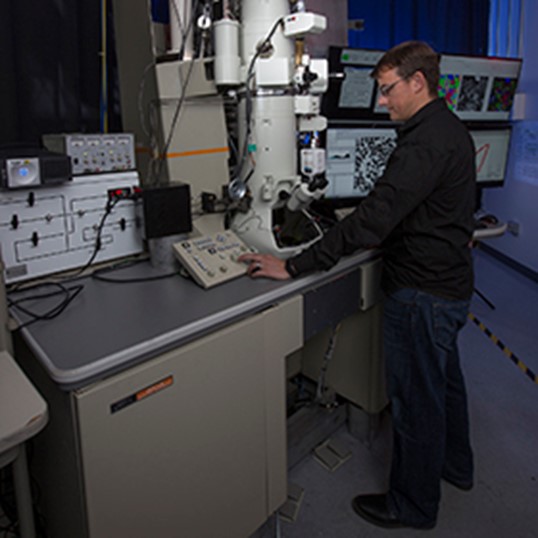
Abstract
Understanding the relationship between processing, structure, and properties of materials has been core to humanity’s progress since the Stone Age. Recent advancements in nanoscale modification and characterization tools along with exponential growth in computational capabilities have greatly expanded our ability to understand and control the properties of materials down to the nanoscale. Ion beam tailoring of materials has become essential to most nanoscale processes to control the structure and subsequent properties of materials. Similarly, transmission electron microscopy (TEM) has become linked with nanoscale characterization.
This presentation will highlight capabilities developed to permit real time nanoscale observation, while the electron transparent sample is exposed to MeV ion irradiation, keV gas implantation, quantitative mechanical loading, laser heating, gas or liquid environments, or various combinations thereof. These capabilities will be highlighted through a set of three experimental examples. In the first set, both the detrimental and beneficial effects of ion and laser irradiation in high-purity gold through structural metals to ceramic insulators. This will also highlight the added advantage of combining in situ TEM techniques with nanoscale orientation image mapping to associate the dynamic evolution with the initial and final microstructures formed. In the third set, advancements in in situ characterization of far-from-equilibrium microstructures that can be created by ion beam modification.
Bio
Khalid Hattar is a new Associate Professor in the Department of Nuclear Engineering at the University of Tennessee, Knoxville and Director of the Tennessee Ion Beam Materials Lab. Dr. Khalid Hattar has over 17 years of experience in radiation damage effects and in situ electron microscopy in a large range of materials systems. He has developed a range of in situ techniques to explore the microstructural and property response of materials to combined extreme conditions at both the TEM and SEM length scale.